Greetings forumgoers and friends, as of late I have found both inspiration and (somehow) motivation to complete various hobby projects that have sat on backburners at various heat and priority settings. I hereby present to you the newest member of my freight car roster, being an Aristocraft boxcar that I converted from yet another of their starter-set 2-axle bobber-chassis thingies, into something a bit more respectable and 4-axled.

There’s a couple of aspects to this build, with it taking about two months to build thanks to various life events and distractions, (with one in particular being a week spent in the Black Hills of South Dakota) as well as it being inspired by an errant eBay listing I found and did not buy. Somebody somewhere threw together a funky bash of one of these little Aristo boxcars onto an interesting set of trucks, and even gave it interior lighting, for mysterious purposes.
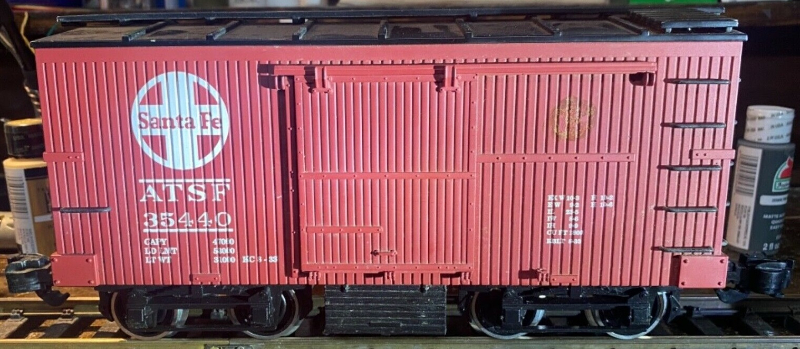
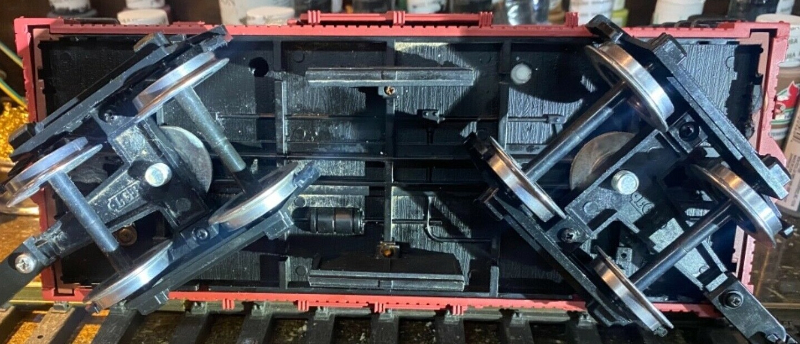
I liked the general proportions as a shorter but not-quite-pipsqueak car on bogie trucks, but not necessarily those toolboxes hanging out below the doors. With later research, those trucks it sits on are LGB 67300 frames, which are typically seen underneath Lehmann’s Barmer Mountain 3061/0 coaches.

Why coach trucks on a freight car? To my dysfunctional eyeballs and per the contemplation of other hobby friends, the general appearance of these trucks evoke the feeling of 1860/70s freight car bogies, and to be frank, they’re far more interesting than the ever-common archbars anyway. Since I model a broad period of secondhand equipment existing between 1880 and 1910, there’s no reason some little old boxcars couldn’t have wound up somewhere still on old post-civil war trucks, maybe just a spare few weeks or months before being refitted with improved equipment anyway.
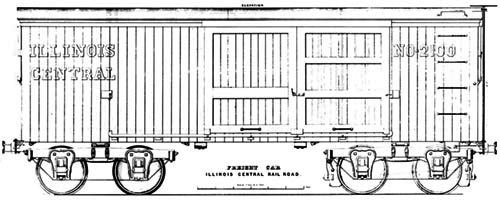
Another excuse is that a lot of my roster equipment lives in a dimension of colonial-export, where various combinations of equipment built by various nationalities can-and-did end up together abroad. Since the trucks are of European design anyway, somebody stuffed them under an imported USA-outline boxcar for whatever reason.
In any case, after mental preparation, I purchased the candidate for rebuild, being this Pennsy 2-axle boxcar, for a tidy and affordable sum.

This little guy must have spent a life on siding, with one door open, in a lot of sunshine. Its paint may be faded, but its future is bright!
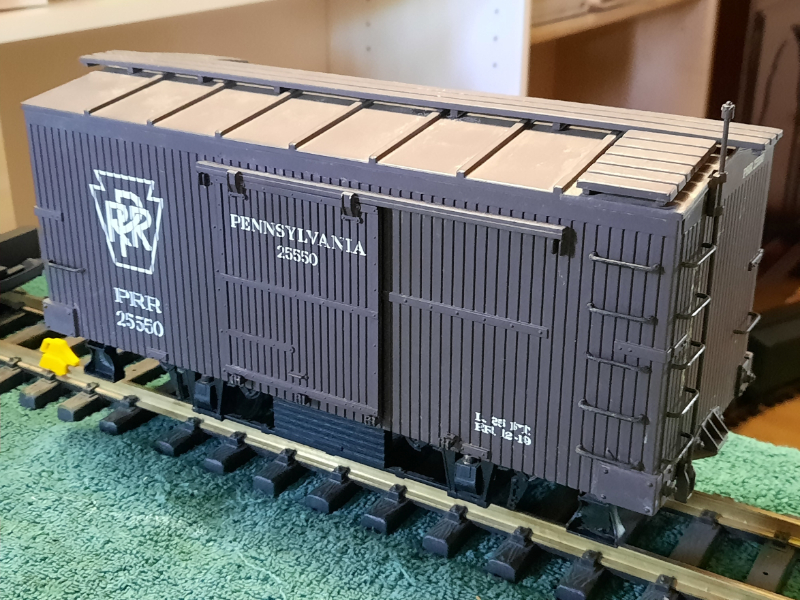
Right away the first things to go are the bobber-caboose chassis components. Those corner steps ended up on a locomotive tender project some of you may have read about recently, and the rest was cut apart and binned. I then ordered those trucks and the usual compliment of 31mm Bachmann metal wheels, and denuded the boxcar of most of its removable details. With the trucks arriving, I plopped the body onto them for creative mind-fueling, and again liked what I saw. Necessary surgery involved chopping off the factory coupler mounting blocks, since the couplers will be truck-mounted anyway.

The immediate issue to arise of course, going from rigid frame mounted axle to pivoting bogies, is how to mount the trucks onto a pivot point on a chassis plate that has none. Metal hardware of course, is the natural answer. Sourcing long length screws and various washers, I spotted and drilled holes that line up with the molded brace-ends on the body, and then drilled holes into two wood blocks, and adhered the blocks with superglue after a thorough tightening.

Later on, I purchased a set of stirrup footsteps of yet-unknown fabrication, and fitted and glued them onto the chassis’ corners.
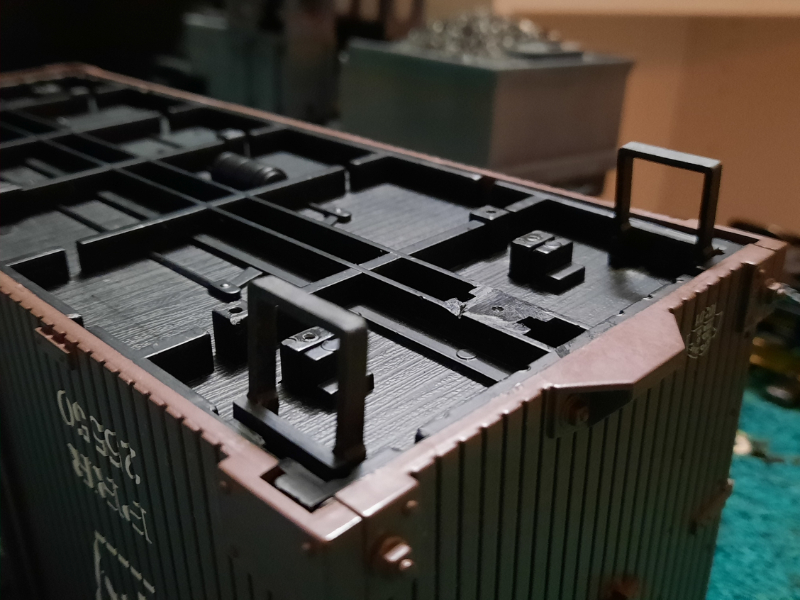

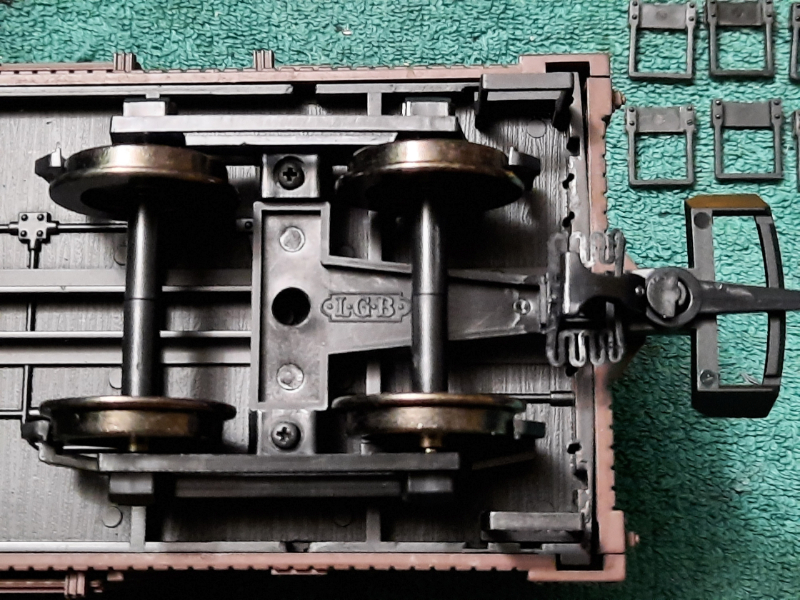
Naturally, seeing this you ask, ‘how do the trucks fare with going around turns?’

Considering that’s at full twist, tighter than R1, I would say they’ll be alright with rotational clearance.


Different views of the body sitting on the trucks. No truss rods here!
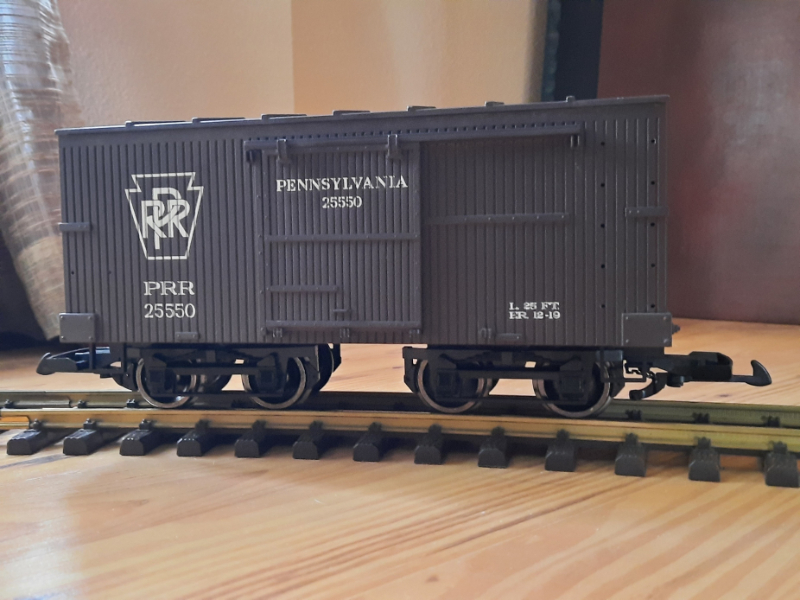
After a finalized mounting of hardware, I tested the car on the R3 curvature of my indoor layout, and the boxcar rolled around just fine. I then elected to contact the paint department after various delays.
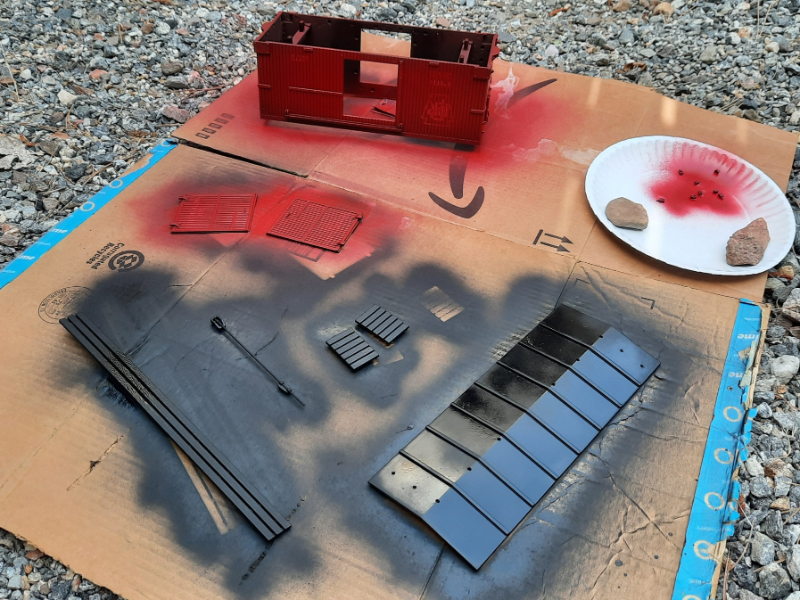
One thing of note is that I have kept distance from cliche Red boxcars for most of my life as a model railroader. Only one locomotive and one little tank car on my roster are donned in crimson, and due to such color rarity, I found myself deciding to paint this little boxcar as such for variety. I later realized that I should have maybe found an ATSF-lettered boxcar, seeing as this is now the second time I have wiped out Pennsy brown and lettering.

Black roof, and red body, and smothered lettering.
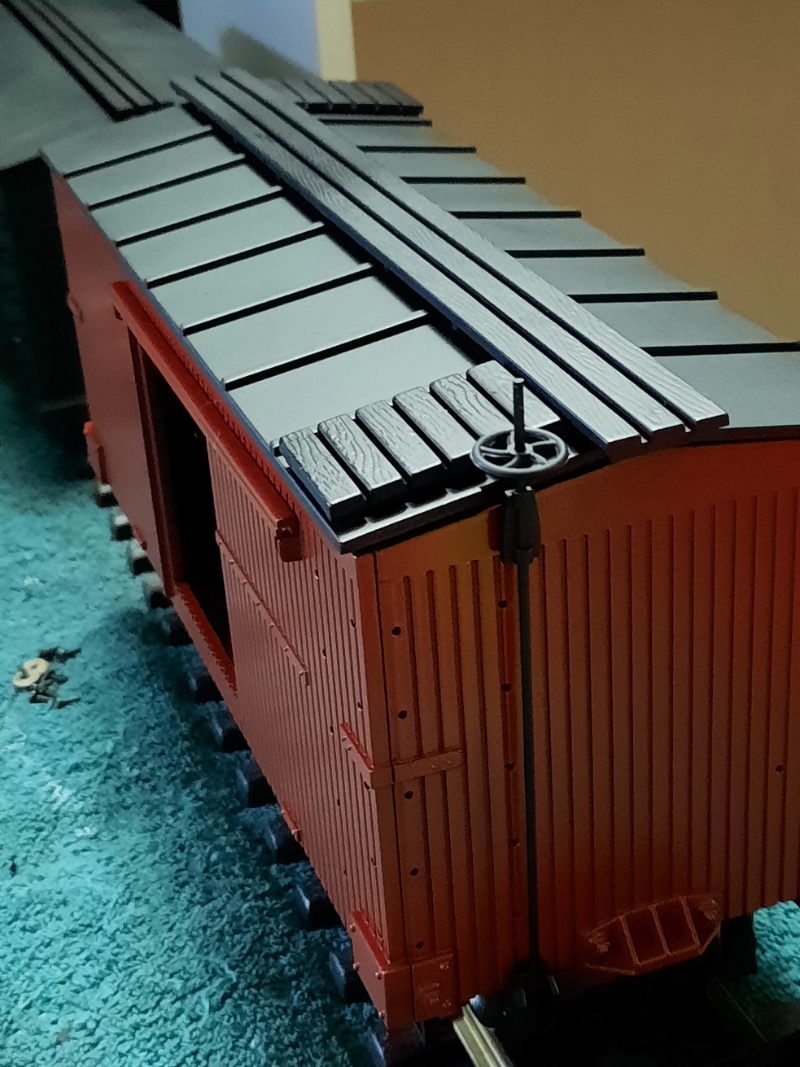
And a new brake wheel!
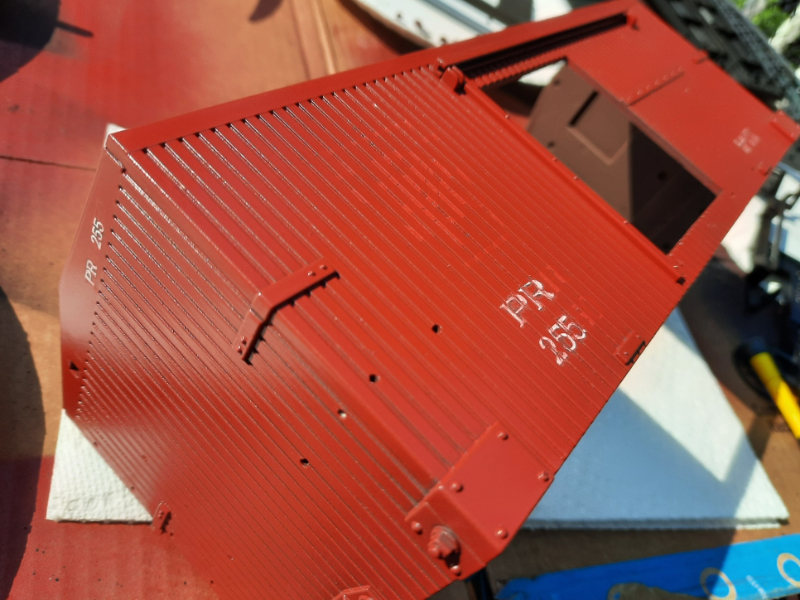
Speaking of lettering, a friend of mine joked about how only a fraction of stenciled data marks survives on my paintings and builds. They mentioned something about PR 225 being all that would remain and some such, so I elected to recover those letters and numbers to immortalize such remarks. Anonymity rules on my railways.
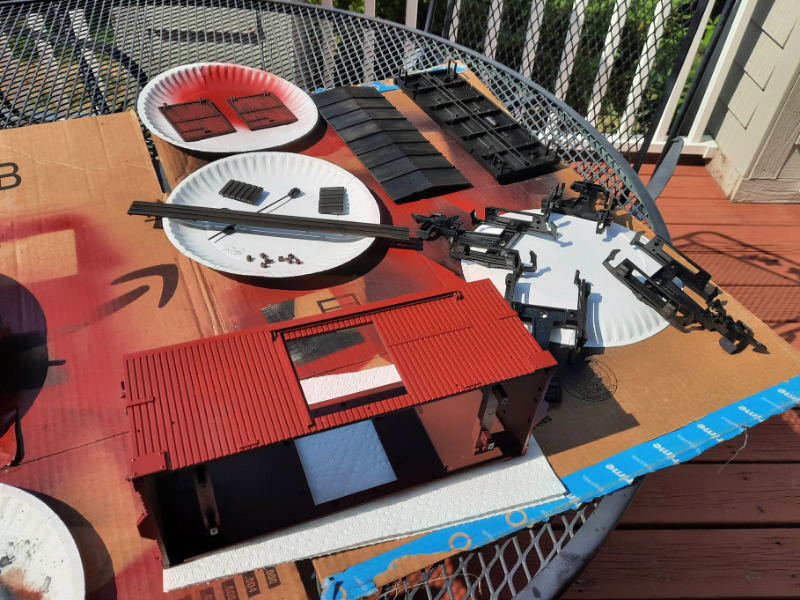
Before the reclamation, I weathered all of the black parts of the boxcar, which coincidentally included a second set of those masquerading coach trucks. I liked the look so much that I made an executive order to get and fit another pair to another boxcar of mine.
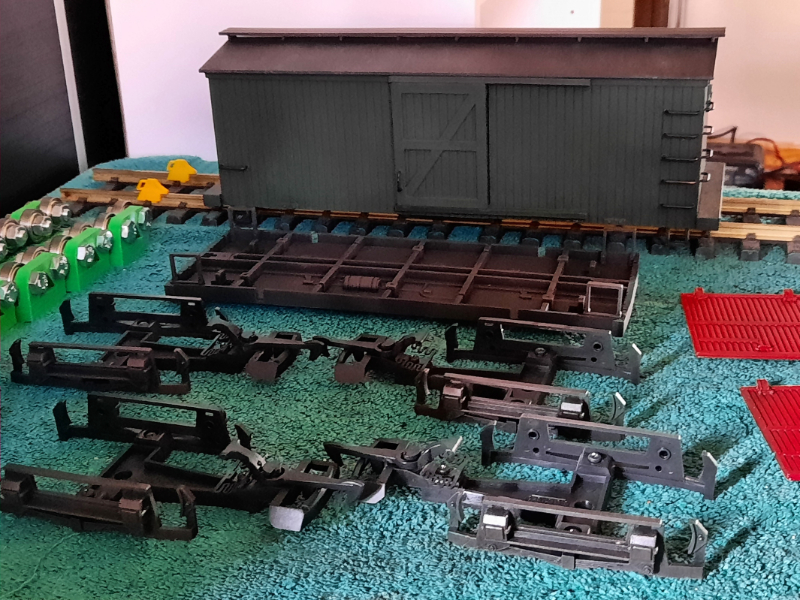
This old green guy is a 1980s Kalamazoo boxcar that previously sat on archbars.
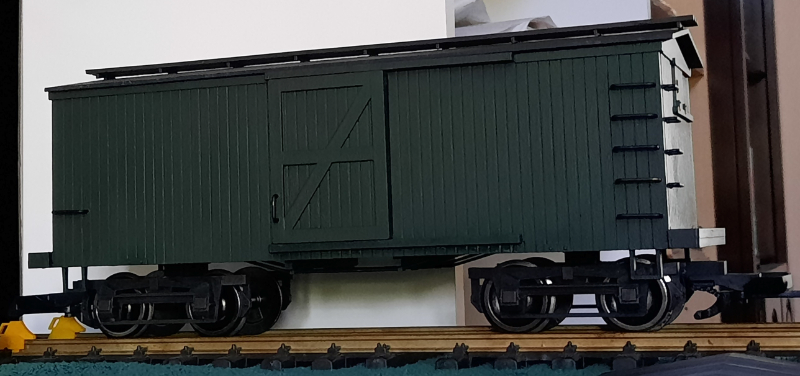
Now it looks positively 1870s! Easy retrofits bring forth good mojo.
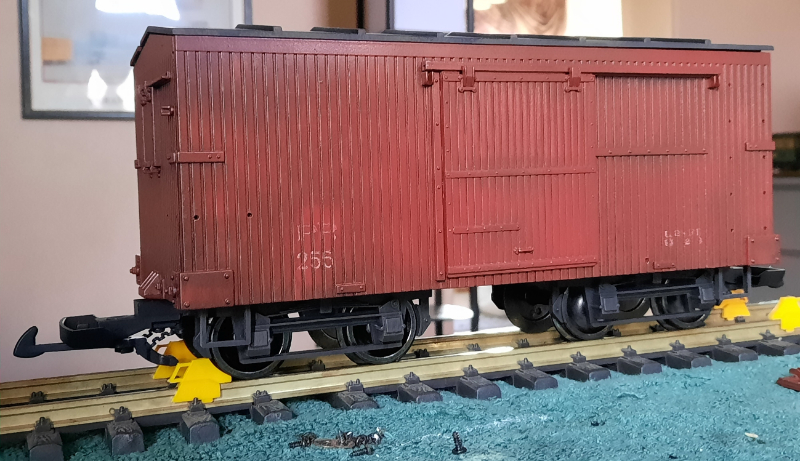
A bunch of paint slathering later, first with paintbrushes and then with a recoat of the sprayed red to mute the weathering washes. Coming along nicely.

Readable reporting marks are overrated. The day after all the paintwork I sealed the deal with the usual blasts of Krylon Matte to murder the shinies, and a day later of that curing, final reassembly occurred, followed by test runs behind my 1880s Dunkirk beastie, to stretch the engine’s legs after a long period of sitting, and to test the overall performance of the boxcar in a consist.
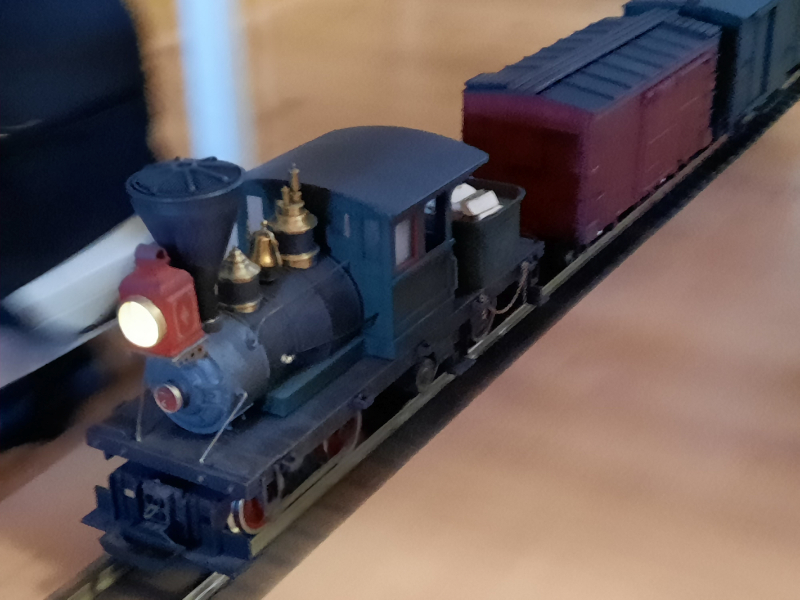
Success was had, with no clearance issues after fitting in large plastic washers onto the screw kingpins. No wobbles either!

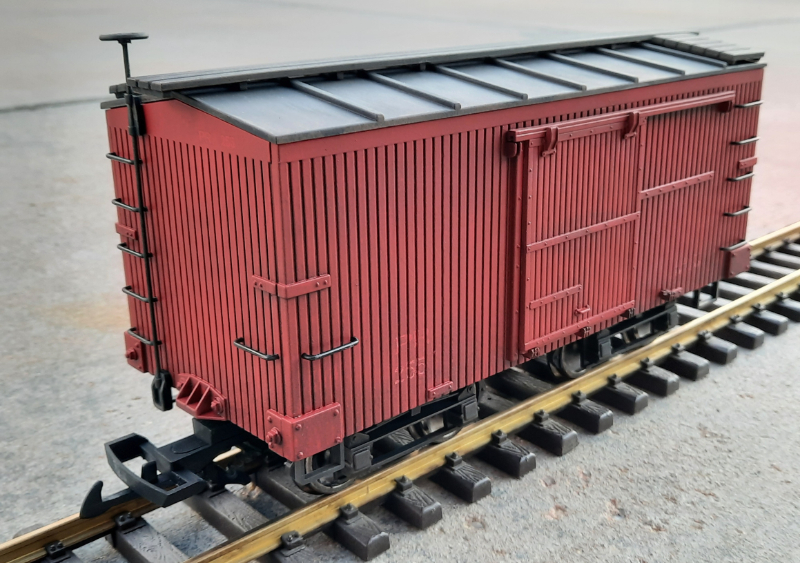

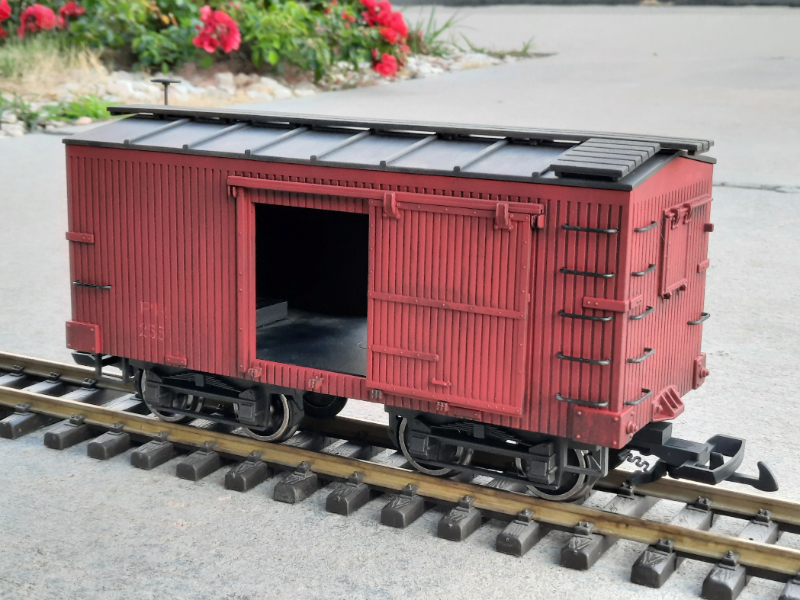
A photography session later in lovely lower light of a sunset evening, and boxcar #255 looks pretty good. Far improved from sitting on a clunky caboose chassis, and an overall curiosity as a shorter-than-usual length boxcar among my other 4-axle 25-30ft freight cars.
Thanks for reading!